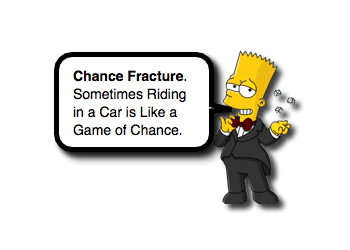
However, there is no horizontal fracture through the posterior elements or other posterior tension band injury that would qualify the primary injury as B1 or B2 type. With burst (A3 or A4) fractures, vertical fractures of the lamina may also be present. Type A injuries involve the vertebral body, with the exception of A0.Ī0: no fracture or clinically insignificant fracture of the spinous or transverse processesĪ1: wedge compression or impaction fracture, which involves a single endplate of the vertebral body without involvement of the posterior vertebral wallĪ2: split or pincer type fracture, which involves both endplates without the involvement of the posterior wallĪ3: incomplete burst fracture, which involves a single endplate along with the posterior vertebral wallĪ4: complete burst fracture, which involves both endplates along with the posterior vertebral wall split fractures that involve the posterior vertebral wall are also included When multiple levels are injured, each injury is classified separately and should be reported in order of declining severity and, in case of ties, cranial to caudal 1. Multiple injury types can be present at the same level, but the more severe injury (type B or C) is the primary coding and the less severe type (type A or B) is specified as a secondary descriptor. Injuries are coded according to the vertebral level involved (e.g., T12: A4) except for injuries that involve the discs, facets, or ligaments between vertebrae, which are coded by the motion segment (e.g., T12-L1: B2). Injuries are categorized into three groups, in order of increasing severity: Indeterminate status of ligamentous integrity or presence of comorbid conditions (referred to as modifiers) Three separate components to every injury are coded: The AO Spine thoracolumbar classification system consists of three classes of thoracolumbar injuries. Combining the colloquial descriptor along with the AO Spine alphanumeric classification, even though redundant, may increase acceptance among practitioners who are not familiar 1.
#CHANCE FRACTURE HOW TO#
The components and descriptive terms used in the classification are, however, an excellent systematic overview of how to assess and describe these injuries.


It is therefore not wise to simply describe an injury as "B2". The AO Spine system appears suitable for pediatric populations, correlating highly with TLICS (which has been validated for children), intraoperative evaluation of the posterior ligamentous complex 6, and having good intra- and inter-observer reliability 7.Īlthough the existence of the AO Spine classification is known among international subspecialty groups and most spine surgeons could apply it as or more reliably than prior systems 2, its day-to-day use varies greatly from institution to institution and it is not safe to assume that clinicians reading a report are familiar with it. Moreover, separate alphanumeric codes are given for the injury morphology and neurological status in the AO Spine system, whereas TLICS combines these assessments in a numeric score. Unlike the other widely used system, the thoracolumbar injury classification and severity score (TLICS), the AO Spine classification system is primarily descriptive rather than aiming to determine treatment, has more options for describing fracture morphology, and is designed for primary evaluation by CT with or without MRI 1. The current AO Spine system (2013) supercedes the more complex and less reproducible AO Magerl classification 1. The AO Spine classification of thoracolumbar injuries is a commonly used thoracolumbar spinal fracture classification system.


 0 kommentar(er)
0 kommentar(er)
